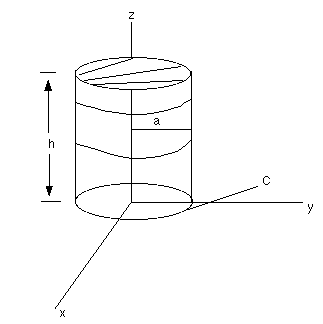
In Lecture 9 we talked about the divergence theorem. Lecture 10 moves on to the last of the three theorems of vector calculus which we will be discussing, Stokes Theorem. Stokes theorem deals with the problem of a 3-Dimensional curve in space, and the line integral around such a curve.

Stokes Theorem reduces to Green's Theorem when the curve is a 2-D curve, i.e. the curve lies in a plane.
 xF across S, where
xF across S, where 
We can do this problem in three ways:
C: r = a cos t i + a sin t j -- 0<=t<=2*pi
dr = T ds = T v dt = - a sint t i + a cos t j
on C: F = - a sin t i + a cos t j + a^2 cos^2 t k



The zero on the sides integral comes from the symmetry of the integrand. xy is positive in Q 1 and 3, and negative in Q 2 and 4. Thus going all the way around the cylinder all these cancel out and the integral adds up to zero.
We know that the flux of  xF through S is equal to the line integral around C by Stoke's Theorem. Stokes Theorem says that we can do the line integral by computing the flux of
xF through S is equal to the line integral around C by Stoke's Theorem. Stokes Theorem says that we can do the line integral by computing the flux of  xF through any surface bounded by C. So, we can use the circle in the plane of C as our surface.
xF through any surface bounded by C. So, we can use the circle in the plane of C as our surface.
